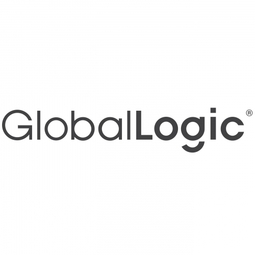Customer Company Size
Large Corporate
Region
- Europe
Country
- United Kingdom
Product
- Splunk’s Machine Learning Toolkit
Tech Stack
- Machine Learning
- Big Data
- AIOps
Implementation Scale
- Enterprise-wide Deployment
Impact Metrics
- Cost Savings
- Customer Satisfaction
- Productivity Improvements
Technology Category
- Analytics & Modeling - Big Data Analytics
- Analytics & Modeling - Machine Learning
Applicable Industries
- Finance & Insurance
Applicable Functions
- Business Operation
Use Cases
- Fraud Detection
- Real-Time Location System (RTLS)
Services
- Data Science Services
- System Integration
About The Customer
The customer in this case study is a leading UK retail bank with over 14 million active customers and multiple brands under its umbrella. As a large corporate entity, the bank operates in the finance and insurance industry, providing a wide range of financial services to its customers. The bank has been facing increasing challenges related to fraud, especially with the rise of online banking and geopolitical tensions that have heightened the risk of fraudulent activities from non-UK countries. The bank's primary focus is on ensuring the security of its payment systems and protecting its customers' information and assets. To achieve this, the bank has been seeking advanced technological solutions to monitor and detect fraudulent activities in real-time, thereby safeguarding its operations and maintaining customer trust.
The Challenge
With 14 million+ active customers and multiple brands, the risk of fraud activity had greatly increased and recently, due to geo-political tensions, the bank wanted the ability to monitor unusual behaviour and fraudulent activity mainly from Non-UK Countries. In particular, this bank needed to gain insights into payments-related fraudulent activity, including payments going to a single account from multiple users & credit card applications and approvals. By having additional monitoring in place, the bank was confident it would be able to implement a process and associated actions that would protect customers and enterprise information, assets, accounts and transactions through the real-time, near-real-time or batch analysis of activities by users and other defined entities. Ultimately, they wanted a solution that automated the detection of potentially fraudulent activity and flagged that activity for review. The bank knew exactly what it wanted and the importance of getting it done, but they were struggling to put the necessary tools in place.
The Solution
Initially, the Bank’s Digital Security & Operational teams had no means of monitoring these fraudulent activities apart from relying on Cyber Security team to provide a view of that data. GlobalLogic was on-boarded to provide professional services to the bank. With the adoption of Splunk’s Machine Learning Toolkit, we began indexing relevant machine data before searching and correlating it to identify the patterns of fraud. Doing so enabled us to put alerts in place that flagged fraud attempts in real time and prevented them from impacting the bottom line. Our AI-enabled approach and engineering capabilities enabled us to analyse data coming from multiple sources, such as F5 devices, authentication systems, transaction processing systems, payment and billing systems, databases etc. Leveraging all the associated data helped to detect anomalous internal and external behaviour, as well as indicators of failures through statistical analysis and machine learning capabilities. All these insights were collated into a customised form-based dashboard, with drill downs providing easy access to targeted data for their investigative needs. We also created rules & dedicated dashboards capable of correlating possible fraud indicators across all channels. Not only did this eliminate silos and manually intensive and cumbersome investigation processes, the bank now has a 360-degree view of their data. Digital Teams can see all customer activity in one place and look for anomalous changes in patterns in single or multiple channels that might indicate fraudulent activity.
Operational Impact
Quantitative Benefit

Case Study missing?
Start adding your own!
Register with your work email and create a new case study profile for your business.
Related Case Studies.

Case Study
Real-time In-vehicle Monitoring
The telematic solution provides this vital premium-adjusting information. The solution also helps detect and deter vehicle or trailer theft – as soon as a theft occurs, monitoring personnel can alert the appropriate authorities, providing an exact location.“With more and more insurance companies and major fleet operators interested in monitoring driver behaviour on the grounds of road safety, efficient logistics and costs, the market for this type of device and associated e-business services is growing rapidly within Italy and the rest of Europe,” says Franco.“The insurance companies are especially interested in the pay-per-use and pay-as-you-drive applications while other organisations employ the technology for road user charging.”“One million vehicles in Italy currently carry such devices and forecasts indicate that the European market will increase tenfold by 2014.However, for our technology to work effectively, we needed a highly reliable wireless data network to carry the information between the vehicles and monitoring stations.”

Case Study
Safety First with Folksam
The competitiveness of the car insurance market is driving UBI growth as a means for insurance companies to differentiate their customer propositions as well as improving operational efficiency. An insurance model - usage-based insurance ("UBI") - offers possibilities for insurers to do more efficient market segmentation and accurate risk assessment and pricing. Insurers require an IoT solution for the purpose of data collection and performance analysis

Case Study
Smooth Transition to Energy Savings
The building was equipped with four end-of-life Trane water cooled chillers, located in the basement. Johnson Controls installed four York water cooled centrifugal chillers with unit mounted variable speed drives and a total installed cooling capacity of 6,8 MW. Each chiller has a capacity of 1,6 MW (variable to 1.9MW depending upon condenser water temperatures). Johnson Controls needed to design the equipment in such way that it would fit the dimensional constraints of the existing plant area and plant access route but also the specific performance requirements of the client. Morgan Stanley required the chiller plant to match the building load profile, turn down to match the low load requirement when needed and provide an improvement in the Energy Efficiency Ratio across the entire operating range. Other requirements were a reduction in the chiller noise level to improve the working environment in the plant room and a wide operating envelope coupled with intelligent controls to allow possible variation in both flow rate and temperature. The latter was needed to leverage increased capacity from a reduced number of machines during the different installation phases and allow future enhancement to a variable primary flow system.

Case Study
Automated Pallet Labeling Solution for SPR Packaging
SPR Packaging, an American supplier of packaging solutions, was in search of an automated pallet labeling solution that could meet their immediate and future needs. They aimed to equip their lines with automatic printer applicators, but also required a solution that could interface with their accounting software. The challenge was to find a system that could read a 2D code on pallets at the stretch wrapper, track the pallet, and flag any pallets with unread barcodes for inspection. The pallets could be single or double stacked, and the system needed to be able to differentiate between the two. SPR Packaging sought a system integrator with extensive experience in advanced printing and tracking solutions to provide a complete traceability system.

Case Study
Transforming insurance pricing while improving driver safety
The Internet of Things (IoT) is revolutionizing the car insurance industry on a scale not seen since the introduction of the car itself. For decades, premiums have been calculated using proxy-based risk assessment models and historical data. Today, a growing number of innovative companies such as Quebec-based Industrielle Alliance are moving to usage-based insurance (UBI) models, driven by the advancement of telematics technologies and smart tracking devices.
Case Study
Enhancing Security and Compliance in Remitly's Global Money Transfer Service with Fastly
Remitly, an online remittance service, was faced with the challenge of securing its proprietary global transfer network. The company needed a security solution that could meet PCI requirements and protect customers' sensitive transactions through its mobile application. The solution had to be capable of defending against new and emerging attack types without impacting performance. Remitly also had to deal with irregular traffic patterns, such as a sudden spike in account transfers from a small network segment on the Pacific coastline of South America. The company needed to determine in real time whether such traffic indicated an attack or valid requests. A traditional web application firewall (WAF) would not be able to distinguish this traffic, potentially leading to customer frustration if the IP was blacklisted.







